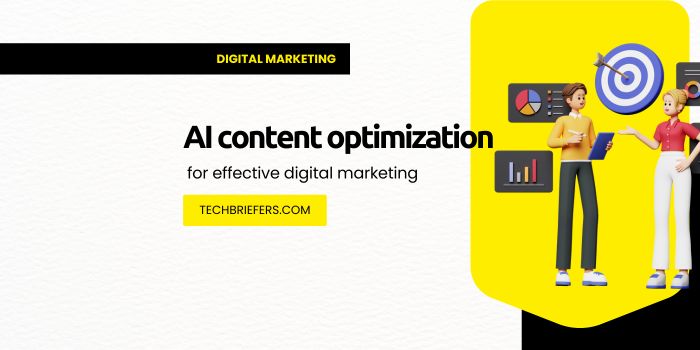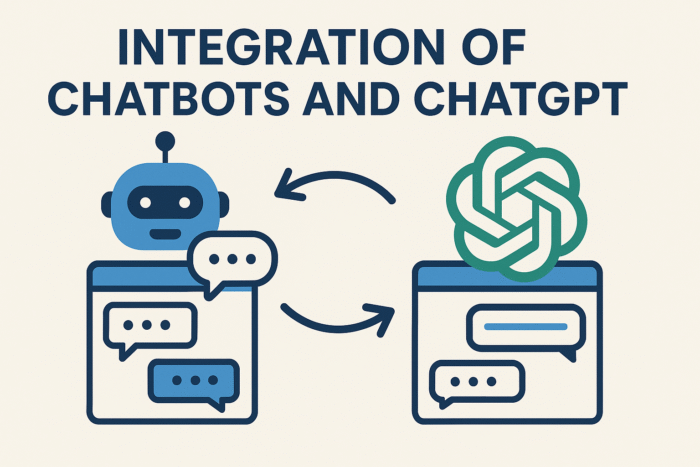AI content optimization for effective digital marketing

AI content optimization is changing how content is produced and enhanced for the web. With the help of artificial intelligence, I can tailor content more specifically to user needs while simultaneously increasing search engine visibility. This saves me time and achieves better results in content creation and optimization.
AI analyzes user behavior, assists with keyword selection, and optimizes headlines and text structure. This not only improves the value of the content but also makes it easier to read and more interesting. Optimization isn’t a one-time step, but rather a continuous process in which AI constantly evaluates new data and fine-tunes content.
The question of data protection and personalization also plays a role when using AI. I’ll show you how to consider these aspects while optimally leveraging AI’s capabilities to improve your content in the long term.
Basics of AI Content Optimization
AI content optimization is about how artificial intelligence is used specifically to make content better, faster, and more relevant for users and search engines. Various technologies and terms play a role, which I’ll explain here. I’ll also show the advantages AI brings to the process and what exactly the term means.
What is AI content optimization?
AI content optimization means using programs that work with artificial intelligence to automatically improve content. This content can be text, images, or videos. The goal is to adapt text so that it’s easier for search engines to find and easier for people to understand.
Generative AI supports me in generating new ideas, phrases, or entire paragraphs. It also helps me check content for errors and style. This saves me a lot of time when creating content and allows me to focus on important topics.
Benefits of artificial intelligence for content
Artificial intelligence offers me several advantages in content optimization :
Speed: AI tools process large amounts of data in a short time.
Automation: Repetitive tasks such as keyword analysis or text checking run automatically.
Precision: AI recognizes patterns and suggests improvements that reduce human errors.
Scalability: I can create and optimize more content without losing quality.
These advantages make it possible to make my SEO strategy more efficient and effective.
Important terms and technologies
Important terms are:
AI (Artificial Intelligence): Computer programs that perform tasks that normally require human thought.
Generative AI: AI that creates new content instead of just analyzing it.
AI tools: Software that uses AI to automate processes such as copywriting or optimization.
Content optimization: Improving content for better user experience and search engine rankings.
Technologies like Natural Language Processing (NLP) help AI understand and generate language. These fundamentals are crucial for effectively using AI in content creation.
Relevance of AI for SEO and search engine optimization
I see that artificial intelligence in search engine optimization makes many tasks easier and more precise. AI helps refine SEO strategies, increases the visibility of websites, and ensures a better user experience on the web.
AI-powered SEO strategies
With AI, I can conduct keyword research quickly and comprehensively. Algorithms analyze large amounts of data and show me which terms are current and relevant. This allows me to better tailor content to the target audience.
In addition, AI automates parts of content creation and optimization, suggesting improvements that, for example, increase readability or better integrate important search terms.
For my SEO strategy, this means I can plan more effectively and allocate resources more effectively without having to manually review every step. My work becomes faster and more precise in terms of content.
Impact on visibility and ranking
AI directly influences how well a website is found on Google and other search engines. Better keyword selection and optimized content increase the chances of appearing higher in search results.
More visibility means more clicks and potentially more customers or readers. AI also helps identify trends early, which helps me adapt content on time.
Search engines themselves use AI to evaluate content and quality. A site optimized by AI is therefore often more search engine-friendly and can achieve better rankings in the long run.
Search engine friendliness through AI
AI ensures that pages are technically more optimized for search engines. It checks loading times, mobile optimization, and properly structures content—important factors for Google.
The user experience is also improved because AI makes suggestions for clear text and logical page structures. This not only makes a website more pleasant for the user, but also “search engine friendly.”
This technical search engine friendliness is a fundamental building block of my SEO work. It’s the only way I can ensure that Google understands my site correctly and gives it preferential treatment.
Content creation with AI
I use AI to create different types of content faster and more efficiently. The technology helps me generate text, integrate chatbots, and combine multiple media forms like videos and infographics. This allows me to respond more specifically to needs and better control content quality.
Automated text creation
AI tools allow me to have texts created automatically. These programs analyze data, search for suitable topics, and formulate content. This saves time and reduces the work required for initial drafts.
I make sure the texts remain understandable and relevant to the topic. Tools like Jasper or the Retresco Text Engine are particularly useful for this. They help me structure ideas and adapt texts for different platforms.
Automation also allows me to create large volumes of content without sacrificing quality. This allows me to regularly deliver new articles, blog posts, or product descriptions.
Integration of chatbots and ChatGPT

Chatbots like ChatGPT expand my capabilities by enabling direct communication with users. I integrate them to answer questions, provide support, or create interactive experiences.
ChatGPT can understand and respond to complex texts. This makes communication more personal and efficient. In many cases, I use it to replace simple FAQ pages or lengthy email conversations.
Through this integration, I automate customer contacts and reduce the workload on my team. At the same time, I increase user satisfaction because answers are delivered quickly and accurately.
Multimodal content optimization
I combine text with images, videos, and infographics to make content more versatile. AI tools like DALL-E or Synthesia help create or enhance visual elements automatically.
This increases attention and makes complex information easier to understand. Videos and infographics are particularly effective in social media marketing.
This multimedia content can be individually adapted to different channels. AI also helps me find the right mix of formats and optimize content planning.
Optimizing headings and formatting
Headings and proper formatting are crucial for ensuring content is quickly understood and easy to read. Clear structures help guide the reader and highlight the most important information. Targeted use of keywords also plays a role, especially in search engine optimization.
AI-powered headline optimization
I use artificial intelligence to precisely customize headlines to search intent. The AI analyses which words are frequently searched and helps incorporate relevant keywords. This improves the discoverability of the content.
It’s important to keep headlines short and descriptive. They should pique interest without being too long or complicated. With AI, I can test multiple versions to find the best headline.
I also make sure to create clear hierarchies. Headings should be logically structured to give the reader a common thread. This also supports the structure for search engines.
Optimal formatting for better readability
Good readability is achieved through clear formatting. I keep paragraphs short and add subheadings. This breaks up the text and makes it easier to understand.
Lists, bolded words, and highlights help you grasp important points quickly. I also avoid sentences that are too long to make the text easier to understand.
Choosing the right font size and sufficient spacing between lines also helps readers navigate easily through the text. I complement images and graphics with appropriate alt tags to further support the content.

Data, personalization, and privacy
I work with data to tailor content to better suit each individual. It’s important to pay close attention to data protection and legal requirements. The balance between meaningful personalization and data protection is key.
Personalization through Artificial Intelligence
AI uses data like click behavior or email addresses to create profiles. This allows me to customize content and deliver it in a targeted manner. This improves the user experience because everyone receives relevant information.
The AI processes only the data necessary for the respective personalization. For example, interests are recognized and suitable offers are suggested. This personalized content reaches the target audience faster and more accurately, increasing the effectiveness of the content.
Related Read: ChatGPT vs Bing Chat: Which One to Choose?
Data protection and compliance with the GDPR
Data protection is binding for me. The General Data Protection Regulation (GDPR) requires that data be processed securely and transparently. Only if I adhere to clear rules can users trust me with their data.
This means I must take technical and organizational measures to protect data from misuse. I also clearly inform users about the type of data processing and its purpose. Compliance with the GDPR is a must for any form of AI personalization.
Related Read: How to encrypt Personal data for GDPR in MySQL
Legal bases and consents
Before I have access to personal data, I need an appropriate legal basis. This is often based on the user’s consent. This must be voluntary, specific, and informed.
I ensure that users can easily give and withdraw their consent. This rule is especially important for sensitive data such as email addresses. This way, I avoid legal problems and protect my users’ privacy.
AI-supported keyword research and competitive analysis
I use artificial intelligence (AI) to determine which keywords are most appropriate for my intended audience and business. At the same time, the technology allows me to closely monitor my competitors and tailor my marketing efforts accordingly. I can avoid guessing and make sound decisions in this way.
Efficient keyword research with AI
With AI, I can search through large amounts of data faster than manually. The technology analyzes search volumes, trends, and user search intent. It’s particularly helpful that I also take regional differences (geodata) into account to better target local audiences.
AI tools like SurferSEO help me filter and prioritize keywords. They not only identify the best keywords but also provide tips on how to optimize my content accordingly. This saves time and increases the relevance of my texts.
Related Read: Complete Guide to Keyword Research
Competitive analysis and market observation
I use AI to analyze my competitors’ strategies. The tools show which keywords they use and which content ranks particularly well. This enables me to identify market gaps and improve my own content in particular.
Market observation with AI also allows me to identify trends and changes early on. This allows me to flexibly adapt my marketing measures. This precision helps me position myself better, especially in local or regional markets (geodata).
Best practices and challenges of AI content optimization
Working with AI for content optimization requires clear processes and the correct use of tools. However, I also encounter technical and ethical challenges. At the same time, exciting developments are emerging that are transforming online marketing for good.
Implementation of effective optimization processes
For me, optimization begins with clearly defined processes. First, I collect data on existing content and its performance. Then, I use specialized AI tools to identify weaknesses and generate suggestions for improvement. Tools like ChatGPT help adapt content for SEO while retaining readers.
Constantly monitoring the results is crucial. This is the only way to avoid content that appears too artificial or incorrect keywords being used. Regular updates and training of the AI models are also part of a successful process.
Key steps:
- Data collection and analysis
- Use of suitable AI tools
- Quality assurance through human control
Related Read: How to Optimize Website for Google – DIY SEO Guide
Challenges and solutions
A major challenge is quality assurance. AI often generates large amounts of content that isn’t always accurate or relevant. Therefore, I carefully review each output and adjust it to avoid errors.
Data protection is another important aspect. When using AI, I have to ensure that user data remains protected and that no sensitive information is processed unintentionally. Clear guidelines and secure systems help with this.
Reliance on AI tools can also be critical. I make sure that not all decisions are automated, thus preventing creative or strategic aspects from being neglected.
Future prospects for AI in content marketing
I see that AI is getting better and better in online marketing. In the future, tools will make content creation even faster and more targeted. The integration of analytics and optimization functions will become more deeply integrated into marketing processes.
Personalized content tailored precisely to the user will be easier to implement with AI. At the same time, I expect the tools to respond more flexibly to different industries and target groups.
The use of AI will not only take over routine tasks but also support creative processes, making content strategies more precise and successful.
Future trends:
- Automated personalization
- Intelligent, adaptive content
- A combination of AI and human creativity
Related Read: Understanding Leads in Digital Marketing and Their Role
Frequently Asked Questions
I explain how artificial intelligence improves content quality and which tools are particularly helpful. I also show how AI influences search engine optimization and the criteria it uses to evaluate content.
How can I use AI to improve content quality?
I use AI to automatically check texts for errors and improve readability. AI also helps me identify relevant topics and tailor content more precisely to the target audience.
Which tools are best for optimizing content using artificial intelligence?
For content optimization, I use tools like GPT-based writing tools, AI-powered SEO analysis tools, and automatic content optimization platforms. These tools help me create content faster and more accurately.
How does artificial intelligence affect SEO?
AI influences SEO by better understanding search intent and creating more relevant content. It also helps identify important keywords and improves the structure of web pages.
What criteria does AI use to evaluate content?
AI evaluates content based on relevance, readability, originality, and user engagement. It also pays attention to keyword density and compliance with SEO guidelines.
How can you effectively use AI tools for your content strategy?
I combine AI analytics with human insight to create content plans. I use AI-generated data for topic discovery, optimization, and success measurement.
How to stay ethical when using AI tools for content optimization?
I make sure to work transparently and avoid creating misleading content. I also always review AI results myself to ensure quality and credibility.

Leave a Reply